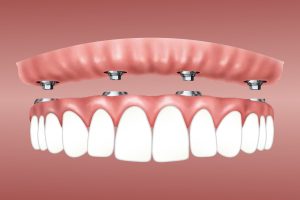Dental insurance for braces in Texas provides individuals and families with crucial financial support for orthodontic treatment.
With the rising costs of braces, having dental insurance specifically tailored for orthodontic care can be a significant relief for Texans seeking to improve their dental health and achieve a straighter smile.
Whether it’s for children or adults, dental insurance for braces in Texas offers coverage for various orthodontic procedures, including braces installation, adjustments, and related treatments.
This type of insurance plays a vital role in ensuring that Texans can access the orthodontic care they need without overwhelming financial burdens, ultimately promoting oral health and enhancing confidence in their smiles.
Introduction to Dental Insurance
Dental insurance is a type of health insurance that specifically covers expenses related to dental care.
It helps individuals and families manage the costs associated with dental treatments, preventive care, and routine check-ups.
Dental insurance plans typically include coverage for a range of dental services, such as cleanings, fillings, X-rays, extractions, and in some cases, orthodontic treatments like braces or aligners.
This insurance works by providing a certain level of financial coverage for dental procedures, usually through a combination of premiums, deductibles, and copayments.
Depending on the specific insurance plan, coverage may be provided for preventive services at little to no cost, while more complex procedures may have higher out-of-pocket expenses.
Dental insurance plans often have a network of participating dentists and dental specialists, and individuals can choose to receive care from in-network providers to maximize their benefits.
It’s important to note that dental insurance typically operates with annual maximums, which is the maximum amount the insurance plan will pay for covered services within a given year. Some plans may also have waiting periods for certain treatments or restrictions on pre-existing conditions.
9 Factors to consider when evaluating dental insurance plans for Braces in Texas
These factors can help you determine which plan will provide the most comprehensive coverage and affordability for your orthodontic needs.
Orthodontic Coverage
Check whether the insurance plan includes coverage for orthodontic treatments, specifically braces. Look for plans that provide coverage for both children and adults, as orthodontic needs can arise at any age.
Waiting Periods
Some dental insurance plans have waiting periods before orthodontic coverage becomes effective. Consider the waiting period length and ensure it aligns with your treatment timeline.
Coverage Limits
Review the coverage limits or maximums for orthodontic treatment. This is the maximum amount the insurance plan will pay towards braces. Ensure that the coverage limits are adequate for your anticipated treatment duration and costs.
In-Network Providers
Check the list of in-network orthodontists and dental specialists. Choosing an in-network provider can help reduce your out-of-pocket expenses as they have negotiated rates with the insurance company.
Deductibles and Copayments
Understand the deductibles and copayments associated with orthodontic treatment. Evaluate how these costs will impact your budget and select a plan with reasonable deductibles and copayments.
Network Flexibility
Consider whether the dental insurance plan allows you to visit out-of-network providers if needed. This flexibility can be important if you have a preferred orthodontist who is not in the plan’s network.
Additional Benefits
Look for any additional benefits offered by the dental insurance plan, such as coverage for diagnostic X-rays, retainers, or post-braces treatments. These extra benefits can add value to the plan.
Premiums and Affordability
Assess the monthly or annual premiums associated with the dental insurance plan. Ensure that the premium fits within your budget while providing the necessary coverage for braces.
Customer Reviews and Reputation
Research the reputation and customer reviews of the dental insurance company. Look for positive feedback regarding claims processing, customer service, and overall satisfaction.
Types of Dental Insurance
- Dental Preferred Provider Organization (DPPO) plans provide a network of providers, but you can pay more to see a dentist not in the network.
- Dental Health Maintenance Organizations (DHMOs) plans often don’t have an annual cap or deductible, but you’ll need to select your primary care dentist from the list of participating dentists.
- Plans with a fee-for-service or indemnity structure don’t rely on a network, giving you access to any dentist you want. You will have to pay out-of-pocket expenses up until the yearly deductible is met with these policies, which are frequently more expensive.
Cost of Braces With and Without Dental Insurance in Texas?
If you have dental insurance, the cost of your braces depends on how much the plan covers. Several of these plans offer a substantial 50% coverage for orthodontic treatment; however, annual and lifetime caps exist.
Considering the treatment range, the average cost of braces without dental insurance ranges from $2,815 to $5,605, according to the American Dental Association’s 2020 Survey of Dental Fees report. In general, adults who use braces spend more money than kids.

Top Dental Insurance for Braces in Texas
Many companies offer dental insurance in Texas, but we’ve narrowed the field to the top four after examining the availability and variety of plans, benefits, network size, and waiting periods:
- UnitedHealthcare;
For individuals and families, UnitedHealthcare offers affordable and complete dental insurance options. Retainers are included in many of United’s plans, and deductibles start at just $50. Over 85,000 dental offices in the United States are part of its extensive network of dental specialists.
This time spent looking for a dentist who accepts your insurance will be reduced to enjoy the financial advantages of a DHMO. The monthly premiums for United’s various tier-based insurance plans start at about $80. This may cost slightly more than other plan providers, but the added expense is well justified, given the comprehensive list of covered services.
- Cigna;
Cigna provides three distinct dental insurance; the only tier covering orthodontists is Cigna Dental 1500, the highest level.
According to Cigna, the typical patient will spend around $3,155 on orthodontic treatment when they select an in-network practitioner versus $6,435 for a patient without insurance.
For dental care, Cigna Dental 1500 has a $50 per person and $150 per-family deductible each calendar year. Orthodontic treatment has a $50 lifetime deductible and a $1,000 lifetime maximum benefit for both in-network and out-of-network providers, with a 12-month waiting period for this insurance.
- Guardian Direct;
Guardian Direct offers a straightforward quote process that lets you rapidly evaluate your coverage options in as little as 30 seconds. You can view four coverage options, price ranges, and information on what is covered by visiting its website and entering your zip code.
DHMO plans start as low as $10 per month, and its most economical basic plans have no waiting periods. You’ll need a more expensive plan to acquire more coverage beyond preventative care — but Guardian Direct allows you to browse comprehensive plan alternatives without waiting days for a representative to contact you or submitting any sensitive personal information.
- Physicians Mutual;
Physicians Mutual should be your first port of call if you seek Texas’s most economical dental insurance. If you’re under 50, you may get one of its generous PPO dental insurance packages with a $25 monthly premium and no deductible.
Its plans cover 350 popular dental operations, including routine examinations, tooth extractions, and crowns. You’ll have the chance to save more money because they don’t have a lifetime or annual cap on coverage.
The financial advantages may justify the 12-month waiting period for primary care if you anticipate needing only a few urgent procedures.
A final thought on the Best Dental Insurance For Braces In Texas
Finding the best dental insurance for braces in Texas is crucial for individuals and families seeking orthodontic treatment. With the right dental insurance plan, Texans can receive the necessary coverage and financial support to make braces more accessible and affordable.
It’s important to research and compare different dental insurance options in Texas as explained earlier to identify the plan that offers comprehensive coverage for orthodontic treatments, including braces installation, adjustments, and related procedures.
FAQs
- How can I receive Medicaid in Texas to pay for braces?
For Texas Medicaid Members who have a severely handicapped malocclusion or special medical conditions such as cleft palate, post-head trauma injury involving the oral cavity, and skeletal anomalies involving the oral cavity, comprehensive medically necessary orthodontic services are a covered benefit.
- How long do braces last, on average?
The typical length of orthodontic treatment is 16 to 18 months; however, it can usually extend to 24 months or longer.
- Does Medicaid in Texas pay for braces?
Texas Medicaid provides dental insurance and other orthodontic services to children under 20 through the Health Steps program. This program covers braces in an accident or sickness that necessitates them but excludes severe handicapping malocclusions.
Recommendations
Cheapest dental clinics in San Antonio

One comment